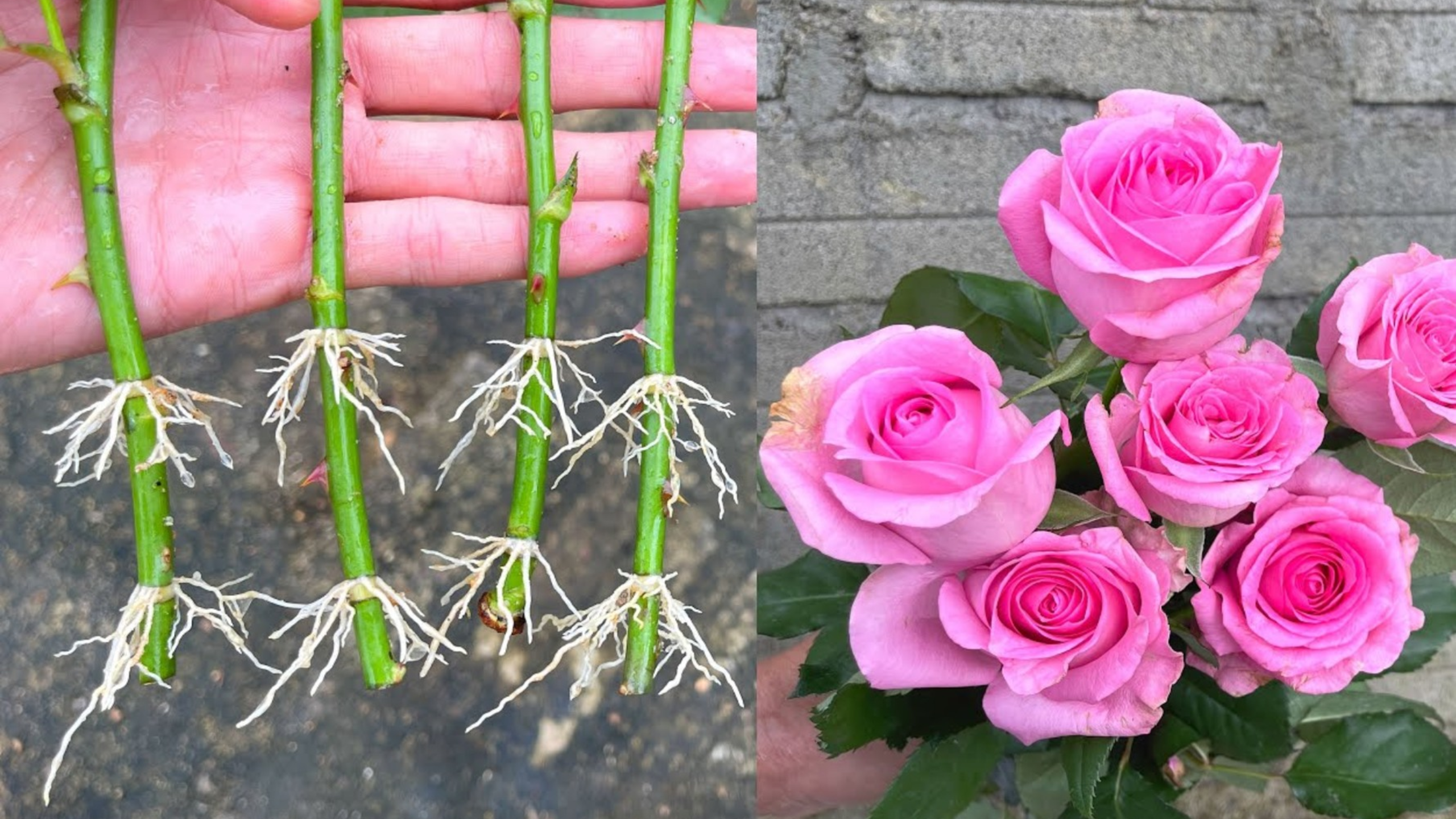Are you a flower lover dreaming of a lush, fragrant rose garden? Or perhaps you’ve come across roses sold without roots and wondered, “Can I plant these and still enjoy beautiful blooms?” The good news is — yes! With the right method, you can successfully plant and grow roses without roots, transforming any space into a vibrant, scented paradise.
In this article, we’ll walk you through a step-by-step process to clone and grow roses from cuttings. This method is straightforward, highly effective, and can be performed by both seasoned gardeners and beginners alike. Whether you’re aiming to grow roses for their incredible colors, enchanting perfumes, or symbolic meanings, this technique opens up new gardening possibilities for everyone.
Why Plant Roses Without Roots?
Roses without roots are usually sold as cuttings or stems, often used as a quick way to propagate the plant. Buying unrooted cuttings can be more affordable and convenient. The challenge, however, is ensuring they develop strong roots and grow into healthy plants.
The benefit of this approach is that it allows you to clone your favorite varieties directly from existing plants, ensuring consistency in color, scent, and shape. Plus, it’s a rewarding experience — seeing a tiny cutting turn into a lush bush with vibrant flowers.
What You’ll Need to Get Started
Before we dive into the step-by-step process, gather the essentials:
- Healthy rose cutting (preferably from an existing rose plant, with a stem about the thickness of a pencil)
- Sharp pruning shears or scissors
- Clean pair of pliers or tweezers (for removing thorns)
- A boric or natural rooting hormone (optional but recommended)
- A transparent plastic bottle or small greenhouse frame
- Coconut fiber or sphagnum moss
- Aloe vera gel (natural root enhancer)
- Water and a spray bottle
- A shaded, sheltered spot for rooting
Step 1: Prepare Your Rose Cuttings

The first crucial step is selecting the right stem. Choose a healthy, disease-free branch from your rose plant, preferably one that has recently bloomed or is about to bloom. It should be about 15-20 cm long (roughly the size of a pencil).
Using sharp scissors, make a clean diagonal cut just below a node (that’s where the leaves attach). This angle helps the cutting absorb water more effectively. Remove all the leaves from the lower part of the stem to prevent rot, but leave a few at the top for photosynthesis.
Next, carefully remove any thorns using pliers or tweezers — this makes planting easier and reduces damage when inserting into the soil or medium.
Tip: For added success, dip the cut end in a natural rooting hormone powder to stimulate root development.
Step 2: Rooting the Cutting in Water
Once your cutting is prepared, place it in a glass of clean water. Ensure the lower part of the stem is submerged, but leaves remain dry to prevent rotting. Keep the glass in a warm, shaded spot.
Within 10-14 days, you’ll start to see tiny white roots emerging — a sign that your cutting is taking hold.
Question: What if I want to speed up the rooting process?
Answer: Using a rooting hormone or pre-treating the cutting with aloe vera gel can enhance root growth.
Step 3: Creating a Miniature Greenhouse (The “Estufa” Method)
While water rooting is effective, many gardeners prefer to create a mini-greenhouse environment for better root development in soil. Here’s how:
- Take a 5-liter plastic bottle and cut it about 7 cm from the bottom.
- Slightly open the top to create a small door that can be sealed with tape or a clip.
- Fill the bottom with a mix of coconut fiber or sphagnum moss, both excellent for retaining moisture.
- Soak the medium lightly to keep it moist but not soggy.
Optional: For natural plant strengthening, rub a small piece of aloe vera gel on the cut end before planting. Aloe not only acts as an antiseptic but also promotes healthy root development.
Insert the rooted cutting (from the water stage) into the prepared medium, ensuring it’s stable and upright. Cover the opening nicely to trap humidity, creating a warm, humid environment similar to a greenhouse.
Step 4: Patience and Proper Care
Place your mini-greenhouse in a shaded, sheltered area. Direct sunlight can heat up the environment too much, damaging the delicate new roots.
Mist the cutting lightly every day to keep the medium moist. After about 12-15 days, check for signs of new growth and root development by gently tugging on the stem. If you feel resistance, roots are forming.
Remember, patience is key here. Some varieties may root faster than others, but consistent care pays off in the end.
Tips for Success and Troubleshooting
- Always use healthy, disease-free cuttings to get the best results.
- Keep the rooting environment humid but well-ventilated to prevent mold.
- Avoid overwatering; excess moisture can cause rot.
- You can transplant your rooted rose cuttings into a larger pot or garden once they develop a good root system—usually after 4-6 weeks.
Why This Method Works
This approach combines simple techniques—like water rooting and creating mini-greenhouses—that are tried-and-true among master gardeners. The addition of aloe vera enhances root growth naturally, making the process even more successful.
By following these steps, you are essentially cloning your favorite roses without the need for mature root systems. It’s an excellent way for beginners to start their rose journey or for seasoned gardeners looking to expand their collection affordably.
Final Thoughts
Planting roses without roots may seem challenging at first, but with patience and proper technique, it’s entirely achievable. Whether you’re aiming to grow a garden filled with fragrant red roses or colorful hybrid varieties, this method opens up exciting possibilities.
Now, are you ready to give it a try? Gather your cuttings, prepare your mini-greenhouse, and watch your garden flourish with beautiful, resilient roses!

